- HOME
- Technical Information
- AMILAN™ Nylon Resin
- Wear properties
Wear properties
Nylon possesses superb wear-resistant properties, making it suitable for numerous applications.
Nylon is an excellent self-lubricant, eliminating the need to apply lubricants under normal conditions. However, the use of a lubricant is recommended in applications entailing high loads or high-speed rotation. Water and other liquids will act as a lubricant on working surfaces. Keep in mind, however, that aqueous lubricants generally have high frictional coefficients.
The different grades of nylons have very similar frictional coefficients.
Figure 41 shows the change in frictional coefficient as a function of load and lubrication conditions.
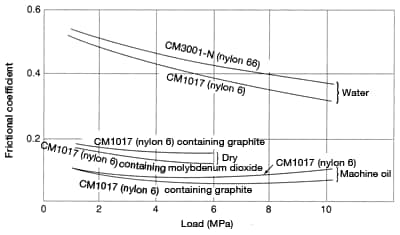
Figure 41: Change in frictional coefficients as a function of load
and lubrication conditions
(sliding speed 14m/min)
Table 8 shows the relationship between the amount of friction and the frictional coefficient when nylon 66 is used as a bearing in conjunction with a variety of different materials and lubricants.
| Combination | Lubricant | Load (MPa) |
Sliding speed
(m/min) |
Amount of friction (min/0.5hr) |
Average frictional coefficient |
|---|---|---|---|---|---|
| Nylon and steel | Water | 4.4 | 47.5 | 0.234 | 0.494 |
| Nylon and steel | SAE No.10 | 11 | 47.5 | 0.127 | 0.140 |
| Nylon and nylon | None (RH 80%) |
7.4 | 47.5 | 0.041 | 0.039~0.099 |
| Nylon and nylon | None (RH 80%) |
3.6 | 47.5 | Slight amount Immeasurable |
- |
Unlike metal, which wears in at a relatively constant rate over time, wear in nylon progresses at a rapid rate initially. Figure 42 shows an example comparing the wear behavior of a nylon bearing to that of a sintered bronze bearing.
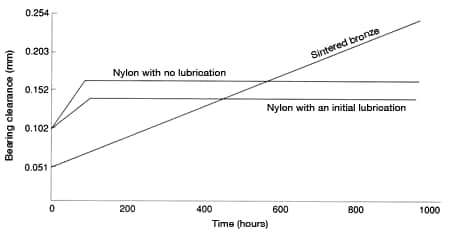
Figure 42: Wear behavior of sintered bronze and nylon bearings
The frictional coefficient and state of wear in nylon also differs depending on surface crystallinity. Heat treatment after injection molding will advance crystallinity and result in a lower frictional coefficient and less wear. Figure 43 shows the effect of heat treatment on the frictional properties of nylon.
Adding molybdenum dioxide or graphite to nylon improves the frictional properties of nylon. Not only do these substances act as solid lubricants, but it is believed they also act as nucleating agents and cause the development of fine crystals in tight formation. Figure 44 shows the effects of adding molybdenum dioxide to nylon 66.
Figures 45 and 46 show the effects of adding molybdenum dioxide or graphite to nylon. As you can see, a small amount of molybdenum dioxide results in a significant effect.
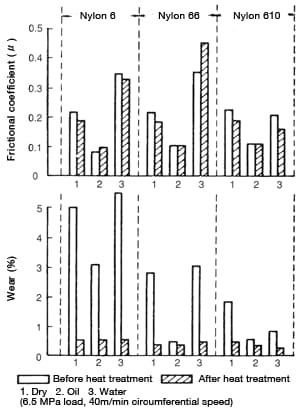 Figure 43: Nylon frictional properties
Figure 43: Nylon frictional properties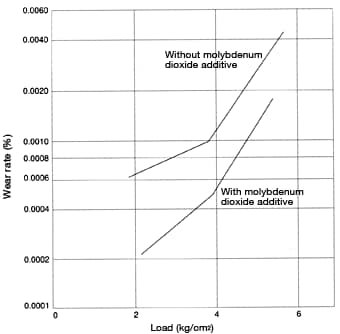 Figure 44: Effects of molybdenum dioxide additive
Figure 44: Effects of molybdenum dioxide additive
on friction with nylon 66 (slide speed: 48.8m/min)
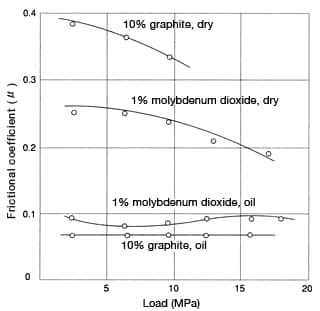 Figure 45: Load dependence of frictional coefficient
Figure 45: Load dependence of frictional coefficient
of nylon 6 with additive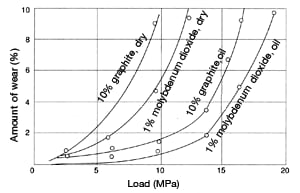 Figure 46: Load dependence of amount of wear
Figure 46: Load dependence of amount of wear
in nylon 6 with additive